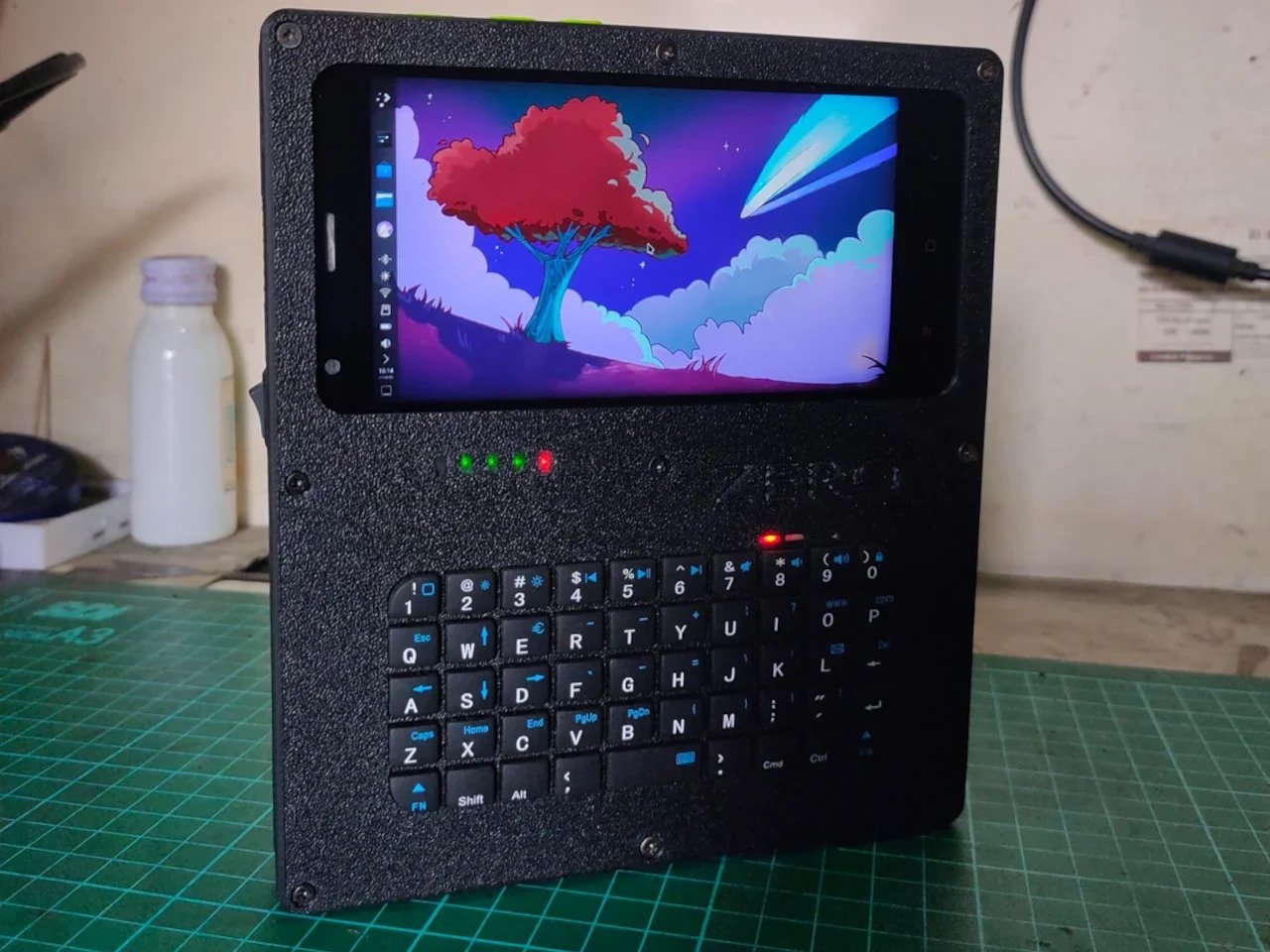We’ve seen our fair share of DIY projects that try to make the fictional cyberdeck device into a reality. That pretty much means a handheld or even wrist-worn computer with a keyboard in a style that is often described as cyberpunk, or at least futuristic. There’s quite a variety of designs available, but most of them have one thing in common: they’re built around the Raspberry Pi or a similar single-board computer.
The RPi, as it is fondly called, is a darling among makers and tinkerers, giving them a capable computer that’s not only small but also affordable. As flexible as it may be, integrating it in projects usually involves some technical know-how or even some soldering. This particular design, however, tries to take an easier route by repurposing an unused smartphone, giving it a new lease on life and probably a more exciting adventure, at least until it completely becomes unusable.
Designer: mongkeelutfi
Some smartphones these days are more powerful than a Raspberry Pi. Even better, they come with integrated displays, built-in batteries, cellular modems, and other convenient components. Of course, they’re not exactly easy to open up and tinker with, but why bother with all that when you can simply build an enclosure around it? That’s what this HaPlay GO Zero 1 pocket computer tries to do, and while it won’t win awards in aesthetics, it can definitely inspire future iterations and designs.
In a nutshell, this homemade cyberdeck uses a Xiaomi Redmi 2 smartphone and some common parts like a Bluetooth thumb keyboard and a USB hub. These are then packed in a 3D printed case designs specifically around these components to make them look like they were made specifically for this design. Behind the scenes, the USB hub provides additional ports beyond the single charging port, while an internal battery doubles the device’s battery life.
Of course, it’s not a simple case (pardon the pun) of just cramming all these inside the squarish enclosure. Making sure all the pieces work like a single unit is even more important since off-the-shelf pieces don’t usually behave in an integrated manner. The Android operating system on the Redmi 2 was also replaced with a mobile flavor of Linux to expand its capabilities beyond the usual apps.
According to the maker, the entire build only cost around $43, though that probably doesn’t include expenses for 3D printing the enclosure. While the design is less than perfect, it does spark the imagination and remind us that many such smartphones are lying around unused and wasted, and it’s quite easy to find new uses for them, including turning them into futuristic-looking handheld computers.
The post DIY handheld computer upcycles an old Android phone, off-the-shelf parts first appeared on Yanko Design.

